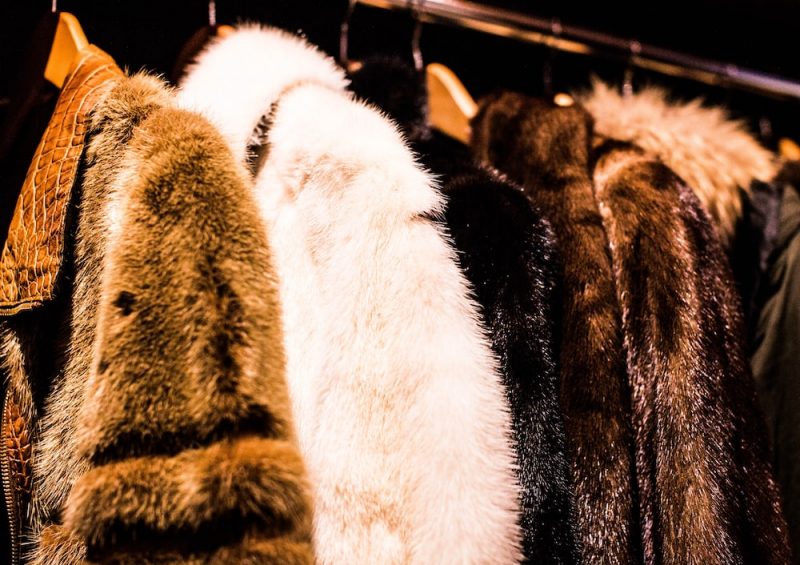
Table of Contents
A Guide on How to Clean and Store Coats in Winter
Ladies and gents, a coat is a winter essential you should consider adding to your wardrobe. There are ways more than one to clean and maintain them for the long term. So you should know how to clean and store coats in winter.
In this guide, I’ll take you through some simple steps to clean and store your winter coats. So note it as you should be aware of these steps. It will be helpful when you find the first set of stains on your coats this winter.
We’ll also look at how you can take care of woollen, down, and faux fur coats in particular.
So, are you ready to make a winter coat a part of your winter wardrobe for years to come? If so, please read on.
The Basics on How to Store Coats

A coat can add some class and elegance to every outfit you layer it over. The colours also add to its charm. But it will look stunning if you take good care of it.
Here are some steps for you to follow. They highlight how you could store coats. We’ll have a look at them in detail as well.
- Dry-Cleaning
- Folding
- Vacuum Seal
- Natural Moth Repellent
- Store in a Cool and Dry Place
1. Dry-Cleaning
A winter coat can be an expensive affair for most people. But quality does come at a cost.
They’re made with some high-quality materials. If you don’t store them well, they’ll get dirty and catch moths. They could also be pretty delicate.
While you don’t wash them like your regular clothing, take them to the professionals for dry cleaning. You should do this before storing them for months.
Go to a place where you can trust the quality of your work. You should also check all the pockets before giving them away for dry cleaning.
2. Folding
Some winter coats are big and bulky. You should fold them well. But, they shouldn’t lose their shine and look. There are ways in which you could do that.
You could zip it or button up the coat. Then, turn it over and fold the sleeves. Next up, fold it in half. That’s that! Remember that you shouldn’t put too much pressure on this procedure.
3. Vacuum Seal
When you store coats, don’t let any moisture settle in. If your coat comes in contact with moisture, moth and fungus will rule on your favourite coat.
Hence, protecting it in the best possible way is a must. Vacuum sealing will keep your winter coat safe. But it will also save space in your closet or luggage.
4. Using Natural Moth Repellents
Do you want to ensure that your winter coat looks fresh and has no signs of moisture on it? Then, you should keep a natural moth repellent in the mesh bag with packing it. They will keep your coats moisture-free in an eco-friendly way.
Some of the valuable herbs are cedar, lavender, and cinnamon. Keep them inside a cotton bag and pack them along with your coat.
5. Store in a Cool and Dry Place
Keep the coats in a bag instead of hanging them in your cupboard. Usually, you get something like a laundry bag for such garments.
As mentioned earlier, It’ll keep them fresh and away from moisture. Now the question arises, “Where do you store coats?”
Please don’t place it in damp areas. You should put it in a cool, dry place.
Winter Coat Care

Before you store your winter coats, you need to clean them up for a fresh look. It’s crucial since you won’t wear winter coats throughout the year.
If you want them to last for a longer period, follow some basic steps. Here’s a list of some simple methods you could follow in cleaning your coats.
- Empty your pockets
- Always hang it up
- Brush it over
- Remove stains immediately
- Wash twice a season
- Always read the care label
- Send it to Laundry
1. Empty your pockets
Whenever you take off your coat, ensure that you empty all your pockets. You shouldn’t leave any heavy objects in your coat for too long. It could cause sagging which would also make the coat lose its shape.
2. Always hang it up
Hanging up your coat will prevent wrinkles and dirt from the surroundings. You could hang your coat on a sturdy wooden hanger for safety. Ensure that you hang it in an airy location.
It must eliminate any foul smell and get back into shape. Finally, leave it to dry for around 24 hours before you get into it again.
3. Brush It Over
You should brush your coat after each use to maintain its cleanliness. You could use a suede brush to help you out with this procedure. It will remove any oils that have built up while wearing it. You could also add a lint roller to the checklist.
The roller will remove any lint, fluff, or threads on the coat’s surface. It will increase your coats longevity and help you maintain a presentable appearance.
4. Get Rid of Stains
If you find stains on your coat, please don’t panic. You can use a damp cloth and gently pat the stains.
But you shouldn’t rub against the stains at any point. It could damage the fibres.
Remember, it’s advisable to treat stains as soon as you notice them on your coat. If it’s a woollen coat, add some laundry detergent to your cloth and continue. If it’s suede, try a pencil eraser to remove the stain.
5. Wash it Twice a Season
When winter is around the corner, remember one thing for your winter coat. You should get it washed before and at the end of each winter season. It prevents moths from entering and wreaking havoc.
It will also remove any dust, bacteria, and pollution that settles in when you wear it. You should ensure that your coat is in the best shape possible for the season.
6. Read the Care Label
Make it a point to look at the care label before you start washing your winter coat. Some coats can be hand washed at home with mild detergents and lukewarm water. Other coats may prefer dry cleaning.
If you know the care label, you’ll see if you’re on the right track.
7. Send it to the Laundry
When you’re unsure, always let professionals do the job for you. They have an understanding of these things and won’t disappoint most often.
Please take it to them and let them know of the service you need. Accordingly, they will get it done and return it to you in shape. Often, it’s recommended to get dry-cleaning done by professionals.
How to Clean and Store Coats Made of Wool

Wool is by far one of the most popular winter fabrics around. They are seen on most of your winter wear. And so, coats also get the privilege to see wool.
You might trust the quality of wool, but how do you clean and store coats made of wool?
Here are some steps you could follow.
In most cases, dry cleaning is your best option for a wool coat. And if the wool coat mentions “dry-clean only”, don’t do it by yourself at home. As I’ve mentioned above, take it to a professional.
If it doesn’t specify a dry-clean, you can machine-wash it at home. But before you begin, prepare your wool coat for washing.
You can prep your coat by using a garment brush and brushing it in a downward motion. Do this over a towel to clean the resulting dirt and debris.
Then, spot treat any stains you notice on the coat. You should do this with a product that works on wool coats.
Once that’s done, turn the coat inside out and place it in a mesh bag to avoid snags. If the washing machine has a wool cycle, that’s great. If not, set it to the gentle cycle and use a wool wash, not regular laundry detergent.
Finally, hang your woollen coat flat to dry. If it feels too hectic, get it dry-cleaned.
How to Wash A Down Winter Coat

Down coats are another popular winter essential. But they’re also pretty expensive. So you should preserve your down coat for as long as possible. You can do this by following the wash care instructions to the t!
Before it enters a washing machine, pretreat any stains on your coat. Ideally, down coats should be washed in a front-loading washing machine. You could also wash it without a centre agitator. It’s because you want gentle agitation for these coats.
The detergent you choose should suit a down coat. When your cycle is completed, dry the coat in the dryer on a low heat cycle. You could add wool dryer balls to fluff your coat after its tumble.
When your coat is slightly damp, remove it from the dryer and hang it to dry. Do this until it’s completely dry to avoid any shrinkage or damage.
How to Clean and Store Coats Made of Faux Fur

Faux fir is purely a fashionable winter fabric. But it does keep you warm during the cold months. The fur on any coat is the main attraction for the garnet. But this is the artificial and animal-friendly variant.
Once you’re done creating glamorous looks, how will you maintain the coat? Try out the methods mentioned here.
You could try hand washing your faux fur coats. It takes more effort than a washing machine.
But it’s fur, after all. You wouldn’t want to ruin your coat’s main attraction, right?
If possible, remove the fur trim from your coat. If not, work around it and clean the rest of your coat according to the tag instructions.
First, fill a basin or sink with cool water and a tablespoon of gentle detergent. Then, add your coat and submerge it entirely. Now let it soak for 10 minutes. Squeeze out all the soapy water and rinse it well.
Next up, roll your coat in a towel and squeeze gently to get out the water. Then, air dry it for a while on a drying rack. Once your fur is fully dry, brush it gently with a soft brush.
So these are some methods to take good care of your winter coats.
How to Pick the Right Winter Coat

When shopping for a winter coat, you need to keep some things in mind. It will help you decide and pick the best pieces available.
So let’s see some factors to consider while you’re at the store or shopping online.
1.Purpose and Reasons for Your Purchase
When it’s cold outside, you’ll need a winter coat. But you might want one for practical or stylish reasons. Some would like a blend of both too.
Hence you need a coat that suits and satisfies your needs. You need to think about a few factors before you take your call.
You should ensure that your coat is waterproof and windproof. Rain and wind could be two factors that dictate your winter experiences. The intensity of your activities also plays a role in the coats you wear.
2. Insulation
Down and synthetic are the two main types of insulation you’ll find in a winter market. It’s considered nature’s best insulator. You’ve also read about a down coat’s caretaking in the above segment.
It’s excellent at trapping air and body heat. This feature allows it to provide warmth and be lightweight too. It’s also highly breathable and has moisture-wicking abilities. The downside is that it won’t work once it gets wet.
Synthetic insulation is another one that traps warm air well. But it does this even while it’s wet. Synthetic insulation could be slightly heavier than down.
3. Outershell and Lining Materials
While looking at the outer shell and inner lining of winter coats, you might find nylon, polyester or fleece. The materials of the jacket should meet your requirements. Also, most insulated jackets tell you if they’re wind-resistant or wind-tight.
Your activity can affect the degree of breathability you need in a winter coat. You don’t want to sweat and let any moisture in while wearing the coat.
It affects your body’s ability to stay warm and it could cause hypothermia. Softshell jackets are an excellent example of a water-resistant, breathable jacket.
Fleece or an extra layer inside will help retain or create more warmth. On some coat, the inner lining zips out. But in most cases, the inner lining is a permanent part of the garment.
4. Features
Apart from this, you should look at other features too. Some of them are as follows:
- Collars
Your coat should have a collar that stands up and remains around your neck. It will protect you more than one that lays flat.
- Zipper Flaps
This feature allows you to cover zippers and seal out any drafts.
- Cinch or Button-Back bands
This feature allows greater draft protection as you work, ski or move about.
- Thumbhole Cuffs
Your winter coat should have a thumbhole cuff that extends around the hand and cuff. It keeps the sleeves from riding up and letting in cold air.
Look into all these factors when you buy your next winter coat. Apart from looking to clean and store coats, look for the best pieces. After all, you would want to enjoy your time out on the streets during winter.
Conclusion
So I hope you’ve understood how to care for and store coats in winter. This guide highlighted some basics you should remember while caring for your coats. I highlighted three types of winter coats and how you can maintain them for the long term.
I hope you get hold of a few fantastic winter coats this season. But don’t neglect the steps you should follow to clean and store coats.
This post was written by Kosha team member – Shawn Mathias